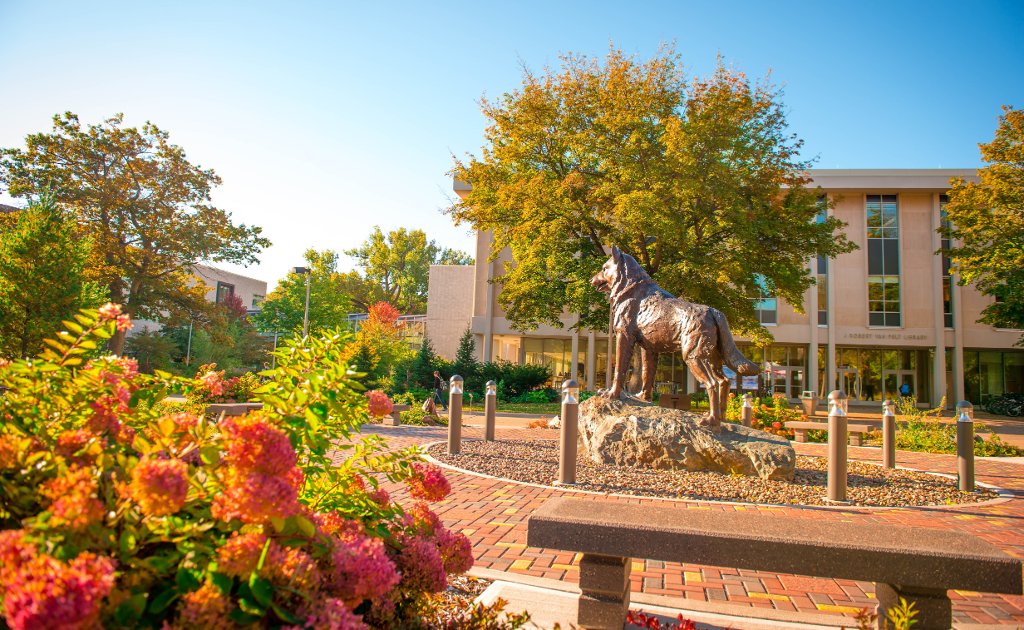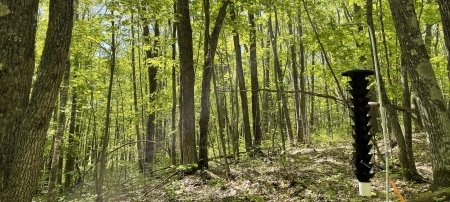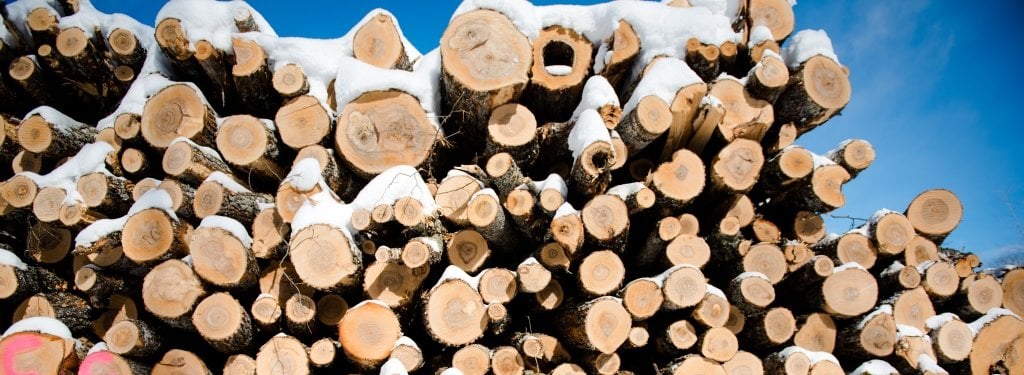Peak leaf color is expected earlier this year. Here’s the science behind it.
Around the Copper Country the leaves on the deciduous trees are already turning to scarlet, blaze orange, tawny brown and vibrant yellow. Last year the leaves began their autumnal turn in October. The reason for the early color? Well, that’s complicated.
“Notice all the color already? The trees are stressed out from soaking too long,” says Tara Bal, research assistant professor in the School of Forest Resources and Environmental Science. “The cold, wet summer has sped things up.”
Bal, whose research focus is on sugar maple health, notes that compared to the historic average (1980-2010), the area around Houghton County has received above average precipitation in 2017. In the past 180 days, the area received 125-150 percent above average rainfall. In the past 90 days, 150-175 percent above average. And incredibly, in the past 30 days, the area has received 200-300 percent above average rainfall.
Still, there are many factors affecting the early color shift.
“The underlying signal is day length, but (the autumnal color change) can go earlier due to stress,” says Molly Cavaleri, associate professor in the School of Forest Resources and Environmental Science, adding that stressors include temperature extremes, too much or too little. “Stressors could be too cold, too wet, too hot, too dry, damage from insect infestation, the roots being compacted. A lot has to do with what’s going on with the roots. It could be due to stresses from last year and the year before. It’s not necessarily what’s going on this year.”
Cavaleri studies how trees work using fine-scale physiology measurements and then extrapolates that information to answer overarching ecological questions within the context of global change. She says in autumn the trees pull back the nutrients in leaves—such as carbohydrates, chlorophyll and nitrogen—and store those nutrients in their roots.
The stress local trees experience then causes the chlorophyll—the chemical that gives leaves their green color—in the leaves to break down. In the summer, chlorophyll is the dominant chemical compound in tree leaves, masking other chemicals that create other colors.
Once the chlorophyll breaks down, other chemical compounds show through. Xanthophyll is responsible for the yellow of birches, ashes and some oaks. Carotenoids are responsible for the riotous orange of sugar maples in the fall.
Anthocyanin, responsible for red leaves, is produced as the chlorophyll breaks down, rather than as a compound that is present during summer. It’s thought that the red color protects the leaves from excess light, which keeps them on the tree longer.
So does this mean earlier peak color this year?
“I think it will be an early color peak,” Cavaleri says. “But that doesn’t tell us anything about the weather of fall. It’s such a complex algorithm that determines what time of the fall the peak is. If we were better able to predict, it would be very good for tourism advertising, but it’s very difficult to predict what week will be peak color.”
The autumns with the greatest color have sunny days and cool nights. And beautiful foliage is big business in Michigan.
“Sugar maples are a huge tourist attraction,” Bal says. “For tourism in Michigan, fall color is a big deal. It has impacts that are difficult to measure. These trees are not just something we want for timber or maple syrup; (the trees) touch whole industries that are a lot of people's livelihoods.”
Winter is Coming (Though Maybe Not As Soon As We Think)
Though the howling winds of winter have descended upon Winterfell, first snowfall along Lake Superior is not determined by how early autumn sets in.
Says Cavaleri: “When (the trees) are feeling stressed for whatever the reason, they want to cut their losses and pull back the nutrients. It doesn’t mean an earlier winter.”
Michigan Technological University is a public research university founded in 1885 in Houghton, Michigan, and is home to more than 7,000 students from 55 countries around the world. Consistently ranked among the best universities in the country for return on investment, Michigan’s flagship technological university offers more than 120 undergraduate and graduate degree programs in science and technology, engineering, computing, forestry, business and economics, health professions, humanities, mathematics, social sciences, and the arts. The rural campus is situated just miles from Lake Superior in Michigan's Upper Peninsula, offering year-round opportunities for outdoor adventure.






Comments